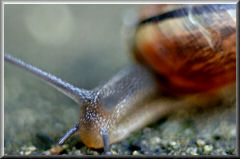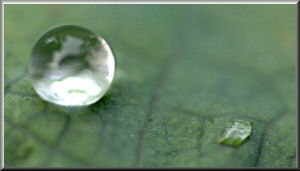|
|

| |
TORONTO
EXAMINER > Nov 25th, 1999
Good
fat, bad fat
By Sheri Fiegehen |

In fact, the fad of low-fat and fat-free diets is detrimental to health,
says Udo Erasmus, Vancouver resident and author of the book Fats That Heal
Fats That Kill.
"People who are fat phobic have the wrong information. They try to
avoid fat, but rather, they should optimize the fats that heal," he
says. We need fats to stay alive, he says. Every cell has to have
them, and because fats are not made internally, cells must get them
from food, he explains. |
Common symptoms of fat deficiency include dry skin and low energy. Eventually
the immune system falters, arthritis-like symptoms develop, as do vision
problems, weakness, clumsiness, water retention, higher blood pressure,
abnormal heartbeat, loss of minerals, behavioral changes such as moodiness
and depression, and increased susceptibility to serious diseases.

"There's also a correlation with suicide and violence," Erasmus
adds.
Not all fats are good, however, says Erasmus. Some promote
tumor growth, some lead to a predisposition for heart
attack and stroke, some interfere with insulin production
- but other fats do the exact opposite.
These health ailments account for about 68 per cent of
deaths, and it's because people are consuming the wrong
kinds of fats, he says. The right fats can help reverse
these problems; for example, some fats actually lower
triglycerides (high blood fats associated with cardiovascular problems)
by up to 65 per cent, he adds.
Contrary to what people may think, good fats actually
help people lose weight, says Erasmus. For example, they
suppress appetite, increase energy levels, and increase
calorie burning, he says.
The richest source of omega 3, an essential fatty acid, is flax, says Erasmus.
It's found in high-fat cold water fish such as salmon, white tuna, sardines,
mackerel and rainbow trout, he says.
"There's also a bit in dark green vegetables, nut they're very low in fat. You'd
have to eat about 50 pounds just to get a couple tablespoons-worth," he says.
Omega 6 is found in sunflower and sesame seeds, almonds, peanuts, soybeans,
and a bit is olive oil, he says. Minor ingredients are very hard to get
enough of, as they make up only 2 per cent of the total amount of oil in
one seed, Erasmus says.
Extra-virgin olive oil is a good source of minor ingredients,
but is a "terrible
source" of the other good fats, he says, as it has no omega 3, and
only 10 per cent of omega 6.
Part of the reason why it's hard to get a substantial intake of good fats
is because food manufacturers have basically sucked them all out, says
Erasmus. They are removed because they shorten the shelf-life, he explains.
"Manufacturers are more concerned with having a longer shelf-life than people's
health," he says.

It doubles the risk
of heart attack, changes immune system functions, interferes with the liver
and insulin functions, and more, he says. It's also found in chips, croutons,
granola bars, crackers and often bread.
"It shouldn't be a part of anyone's diet. I like to tell people, if you look
on the label and see the 'h', get the 'h' out of there, he laughs.
If you consume fats wisely, you can also have some saturated fats and still
be OK, Erasmus says.
"You can have that potato with sour cream - but in fact, it's better to skip
the potato and just eat the sour cream. In fact, I eat a whole tub of it. I like
to do that once in a while," he says. Believe it or not, he says, the
sour cream has less of a fattening effect on the body than the potato.
The potato has sugars and starchy carbohydrates that turn into fat,
he explains.

This
increases its toxicity, which correlates with
cancer and cardiovascular diseases, he says.
Frying with butter is less damaging.
So how do you know you're eating enough foods with the right fats?
"Use the skin test. if your skin is dry, you need more. It's your skin that loses
it first and gets it last; meanwhile you're being affected internally. When your
skin becomes soft and velvety, then you're doing OK," he explains. |
|
|
|
| |
|
|